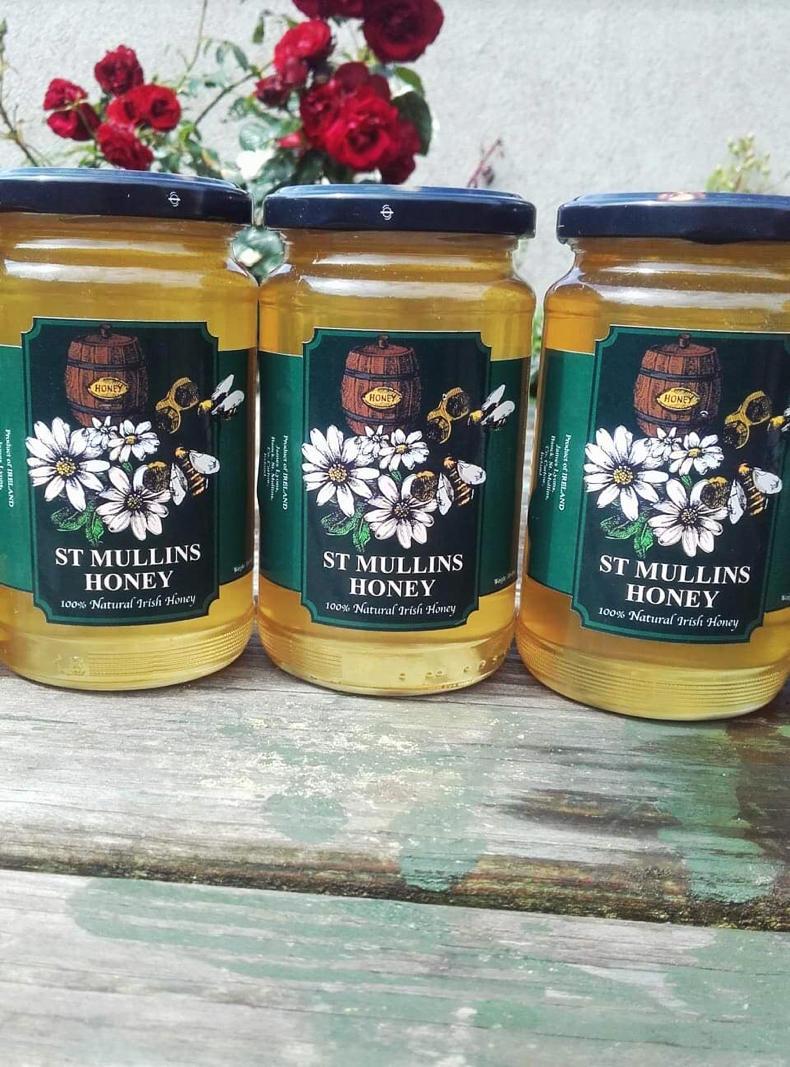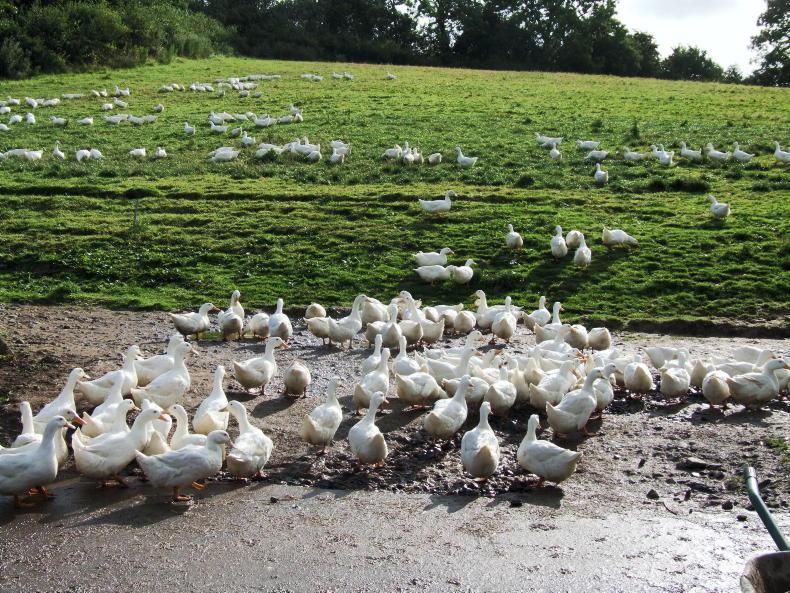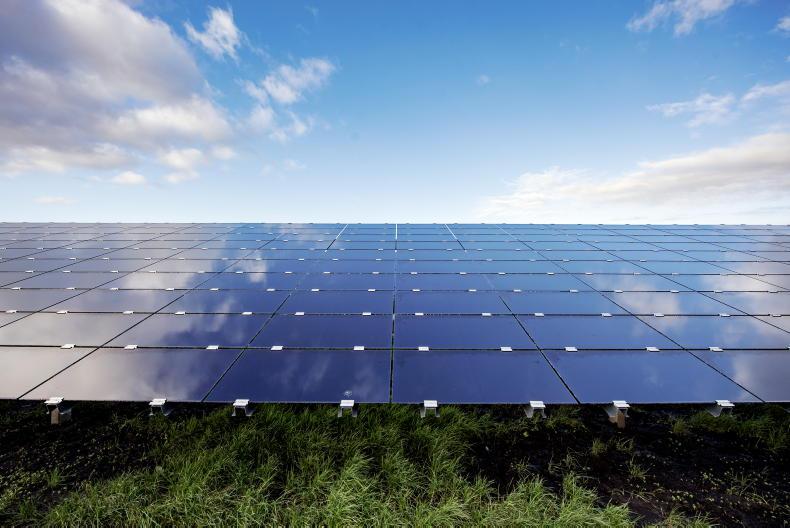We had sheep and sucklers the whole time,” James begins. “But we were renting ground and it was too dear. An uncle of mine, Paddy who passed away in 2016, always had bees, so I suppose from the time I was going to secondary school, I was keeping some of my own.
“About two years ago I wanted to go commercial, so I did a course in the Orchard House Kilkenny and registered the St Mullins Honey label. Basically, it went from there. I’m currently with Carlow Beekeepers, who are great for promoting beekeeping and providing support for the local beekeepers.
“I bought two or three hives of bees that year and I built them up along. I was lucky my uncle had given me a couple of hives. It’s not a good thing to be buying in hives because you can bring in disease and the native Irish honeybee, which I have, can be very susceptible to disease.
“My uncle gave me two hives when I was 16 and I built them up gradually. You can double the hives every year if you split them. You can build them up fairly quickly.
“I have 70 hives. I keep them in sets of 10, each of which would take up a two-and-a-half mile area. If you have too many in an area, the colony struggles. A full colony could be 50 or 60 thousand bees a hive.”

James Lyons of St Mullins Honey.
Equipment
“You need an extractor, for taking out the honey. I need a bigger one. You don’t need a lot of gear but the jeep, suit and smoker are very important! When you light the smoker, the smoke stuns the bees, so they’re not as active when you’re working with them or taking out honey.
“I bought my gear starting off from Paul O’Sullivan Bee Supplies in Dublin. If you were to buy a hive and the suit and the smoker, by the time you’re set up, it could cost €1,000.
“The slowest part of beekeeping is putting all the frames together. Putting in wax and foundations can be very labour intensive.”
The future
“I’ll try to manage 100 hives. When you’re on your own, it’s about as much as you can manage. Not many lads want to help you with bees because most are afraid of them. I’m lucky I’ve one friend up the road who will help me, Nick Hill, he’s great with them.
“Collecting the supers of honey is the best part. I start harvesting in August. I took some honey off them last week because there was just so much of it and I had too much supers on the hives, but that’s unusual, it’s generally August.
“Usually you could have a hive that could have 20 pounds of honey or a hive that could have 100 pounds of honey – it all depends on how strong the colony is. This year is a particularly good year.”

St Mullins Honey.
The hardest part
“Swarm control is probably the toughest part of the bees. Stopping them swarming in May, June and July is the biggest problem. You have to draw out the queen.
“As the colony builds up, she will want to leave, so you have to split hives. Sometimes if you split them, they’ll still swarm around.
“If you didn’t open a hive every five to six days in April or June, they will definitely swarm. They will leave 30% of the colony behind, and they’ll build back up, but as regards getting any honey from them, it won’t happen.
“I put up swarm traps around the area for my own bees. Put up a hive with a cone in it and an empty box – they will find it and go into it. I’ve caught several of my own hives that swarmed that way.”
Queen Bee
“The queen dictates what goes on in the hive. I have a hive of bees here and they’re really vicious. But they’re a brilliant hive of bees. I have 60 or 70 pounds of honey there already. But if you walk near the hive, they’re out after you.
“Then I have hives up there that have really quiet queens in them and you could open them up and they wouldn’t look at you. It just depends on the queen.
“I never take honey off the brood chamber at the bottom of the bees. A lot of beekeepers feed them sugar syrup, but I don’t. I leave them all of their own honey. I think the bees stay healthier and there’s no trace of sugar water or sugar syrup in your honey when you’re selling it. It’s 100% natural.
“If I had a really strong colony going into the winter I’d leave a super of honey with them to help them get through the winter.
“Around here, we have the river Barrow and a flower comes on it in August called Himalayan balsam. It stays in bloom and the bees love it. The honey that comes off the Himalayan balsam in the back end of the year crystallises so you either take it off them really quick or leave it with them. I leave it with them.”
A jar (1lb) of St Mullins Honey retails at €8.99. This year’s honey is now available to buy in Blanchfield’s Pub, St Mullins, Red Mills shop, Goresbridge, Fairview filling station, Graiguenamanagh or directly from James Lyons on 087 1430043.
Read more
Key farm safety tips for the summer
'A hobby gone mad' at Amberly Alpacas
We had sheep and sucklers the whole time,” James begins. “But we were renting ground and it was too dear. An uncle of mine, Paddy who passed away in 2016, always had bees, so I suppose from the time I was going to secondary school, I was keeping some of my own.
“About two years ago I wanted to go commercial, so I did a course in the Orchard House Kilkenny and registered the St Mullins Honey label. Basically, it went from there. I’m currently with Carlow Beekeepers, who are great for promoting beekeeping and providing support for the local beekeepers.
“I bought two or three hives of bees that year and I built them up along. I was lucky my uncle had given me a couple of hives. It’s not a good thing to be buying in hives because you can bring in disease and the native Irish honeybee, which I have, can be very susceptible to disease.
“My uncle gave me two hives when I was 16 and I built them up gradually. You can double the hives every year if you split them. You can build them up fairly quickly.
“I have 70 hives. I keep them in sets of 10, each of which would take up a two-and-a-half mile area. If you have too many in an area, the colony struggles. A full colony could be 50 or 60 thousand bees a hive.”

James Lyons of St Mullins Honey.
Equipment
“You need an extractor, for taking out the honey. I need a bigger one. You don’t need a lot of gear but the jeep, suit and smoker are very important! When you light the smoker, the smoke stuns the bees, so they’re not as active when you’re working with them or taking out honey.
“I bought my gear starting off from Paul O’Sullivan Bee Supplies in Dublin. If you were to buy a hive and the suit and the smoker, by the time you’re set up, it could cost €1,000.
“The slowest part of beekeeping is putting all the frames together. Putting in wax and foundations can be very labour intensive.”
The future
“I’ll try to manage 100 hives. When you’re on your own, it’s about as much as you can manage. Not many lads want to help you with bees because most are afraid of them. I’m lucky I’ve one friend up the road who will help me, Nick Hill, he’s great with them.
“Collecting the supers of honey is the best part. I start harvesting in August. I took some honey off them last week because there was just so much of it and I had too much supers on the hives, but that’s unusual, it’s generally August.
“Usually you could have a hive that could have 20 pounds of honey or a hive that could have 100 pounds of honey – it all depends on how strong the colony is. This year is a particularly good year.”

St Mullins Honey.
The hardest part
“Swarm control is probably the toughest part of the bees. Stopping them swarming in May, June and July is the biggest problem. You have to draw out the queen.
“As the colony builds up, she will want to leave, so you have to split hives. Sometimes if you split them, they’ll still swarm around.
“If you didn’t open a hive every five to six days in April or June, they will definitely swarm. They will leave 30% of the colony behind, and they’ll build back up, but as regards getting any honey from them, it won’t happen.
“I put up swarm traps around the area for my own bees. Put up a hive with a cone in it and an empty box – they will find it and go into it. I’ve caught several of my own hives that swarmed that way.”
Queen Bee
“The queen dictates what goes on in the hive. I have a hive of bees here and they’re really vicious. But they’re a brilliant hive of bees. I have 60 or 70 pounds of honey there already. But if you walk near the hive, they’re out after you.
“Then I have hives up there that have really quiet queens in them and you could open them up and they wouldn’t look at you. It just depends on the queen.
“I never take honey off the brood chamber at the bottom of the bees. A lot of beekeepers feed them sugar syrup, but I don’t. I leave them all of their own honey. I think the bees stay healthier and there’s no trace of sugar water or sugar syrup in your honey when you’re selling it. It’s 100% natural.
“If I had a really strong colony going into the winter I’d leave a super of honey with them to help them get through the winter.
“Around here, we have the river Barrow and a flower comes on it in August called Himalayan balsam. It stays in bloom and the bees love it. The honey that comes off the Himalayan balsam in the back end of the year crystallises so you either take it off them really quick or leave it with them. I leave it with them.”
A jar (1lb) of St Mullins Honey retails at €8.99. This year’s honey is now available to buy in Blanchfield’s Pub, St Mullins, Red Mills shop, Goresbridge, Fairview filling station, Graiguenamanagh or directly from James Lyons on 087 1430043.
Read more
Key farm safety tips for the summer
'A hobby gone mad' at Amberly Alpacas











SHARING OPTIONS